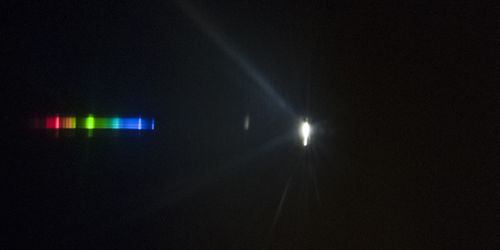Light
Contents
hideExplanation
Light is a part of the electromagnetic spectrum that are visible to the human eye. Light is made up of the elementary particle known as photon travelling at different wavelengths determined by their energy. When photons travel at a wavelength range from 400 to 700 nanometre, it radiates as visible light. Like any elementary particles, photons exhibit the wave-particle duality. The visible light can be split into its constituent wavelengths by passing the light through a prism. This is known as light dispersion. A rainbow is the most common example that practically displays this spectacular phenomenon.
Frequently Asked Questions
Why only the visible part of the electromagnetic spectrum is sensed by the human eye?
Our eyes are sensitive to only the 400 to 700 nanometre part of the spectrum, because of the way we evolved on Earth. Electromagnetic radiation within this range is the only light that reached the ocean depths. As eyes evolved inside the waters during the historic periods, it is believed that this could be the reason why our photoreceptors are evolved to be sensitive to this range.
What is the source of light?
The primary sources of light in the universe are the stars that emit radiation, more in the visible spectrum, analogous to a black-body. In our solar system, the Sun is the source of light. On Earth, there are other sources of light, like candles, bulbs, lamps and similar artificial sources. Visible light is also emitted when the electrons of atoms drop from a higher energy state to a lower energy state. This is the basic principle of LEDs and lasers.
Are there any other colours that humans cannot see?
Humans perceive colours when different types of cone cells in their eyes detect specific wavelengths that are found in the visible part of the electromagnetic spectrum. As light is something humans can see within this spectrum, there are no other colours. However, if the lens of the eye is removed, can perceive wavelengths shorter than 400 nm, which is ultraviolet. Claude Monet, a French painter who had undergone a cataracts surgery, perceived colours in ultraviolet as his lens was removed.

